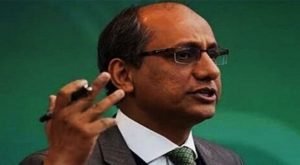ISLAMABAD: A new technological era has prevailed across the globe and every country is trying best to keep enhancing technological advancements and capture Information Technology market share which has a value of worth $12 trillion.
Advanced nations are now engaged in a technological trade tussle and trying to become a world leader in artificial intelligence by 2030. The advanced countries had invested and are spending billions of Dollars in technology including next-generation 5G which ensures to download a large size of data within minutes or even seconds. It will give a boost to driver-less car technology and will help to fulfill a dream of shifting scattered cities into smart cities.
China has been investing a great number of dollars in Pakistan under China Pakistan Economic Corridor (CPEC).
On the initiative of land-based connectivity, optical fiber cable is linked between two countries.
A Chinese company may lead Pakistan to its first ever 5G technology. However, 5G is more expensive than 4G. Therefore, the future government may have to work hard to introduce it in its full spirit as next evolution comes in form of 5G that will offer attractive data rates and more than that the fastest speed ever.
International Telecommunication Union (ITU) is going to launch 5G standards in 2019 and on the whole, a vast number of trials and experiments already being held in different parts of the world including Pakistan.
Zong and Telenor might be the first companies to introduce 5G. Up to a point, Zong also introduced 4G service in Pakistan before any other company. The company also requested Pakistan Telecommunication Authority (PTA) to take permission for the testing.
The question arises how 5G will be different from its preceding generations and when what of 5G for Pakistan is still unclear. The most publicized aspect of 5G is the introduction of new frequency spectrums, broadly categorized into frequency range 1 (FR-1) and range 2 (FR-2).
Recent 5G trails conducted abroad have already demonstrated the speed of 9.3 Gbps over 24 GHz spectrum, nearly 10 times faster than the theoretical maximum data rate for 4G.
When contacted, official sources said policy directives for test and development of technologies for fifth generation (5G) wireless networks in Pakistan has been issued last year which would be implemented by the Pakistan Telecommunication Authority (PTA).
The next generation mobile services (3G/4G) are continuously gaining momentum in Pakistan since their launch in mid-2014 while the demand for data services is growing along with the subscriber base which has crossed 58.56 million with a teledensity of 28.08 during last five years. The Basic Telephony subscriber reached three million with 1.30 percent teledensity while on another hand the number of cellular subscribers crossed 151 million by end of August this year.
The official said 4G network roll-outs continued across the country. Minister for Information Technology and Telecommunications, Dr. Khalid Maqbool Siddiqui has also hinted introduction of 5th Generation (5G) service from next year to attract foreign investment.
“We need to introduce more innovative services in a mobile broadband arena not only to facilitate the consumers but also attract precious foreign investment and meet modern requirements,” said the Minister.
The Minister had said, “The world is changing very swiftly and to compete with other nations we need to adopt new technologies.” He hoped that keeping in view of the importance IT sector in Pakistan foreign companies would approach themselves to launch the modern 5G service.
As per operator-wise data issued by PTA regarding the number of 3G and 4G subscribers, Mobilink Jazz’s total count for 3G users stood at 15.04 million by August 2018, as compared to 14.54 million by January 2018. Jazz 4G user numbers jumped from 2.23 by January 2018 to 5.07 million by Aug 2018.
Zong 3G subscribers decreased to 9.03 million by August 2018, from 9.08 million in January 2018, while the number of 4G users jumped from 5.07 million by January end to 8.13 million by Aug 2018.
The number of 3G users of Telenor decreased from 10.75 million in January 2018 to 10.21 million by August 2018. The number of 4G users jumped from 1.88 million in January 2018 to 3.59 million by August 2018.
Ufone’s total 3G subscribers reached 7.47 million by end of August 2018 as they were 6.630 million in January 2018.
It is imperative that we should remain proactive in ensuring market readiness for the next wave of mobile communications i.e. 5G which would open a new arena for smart devices and ensure employment and investment opportunities in Pakistan during coming years.
app




